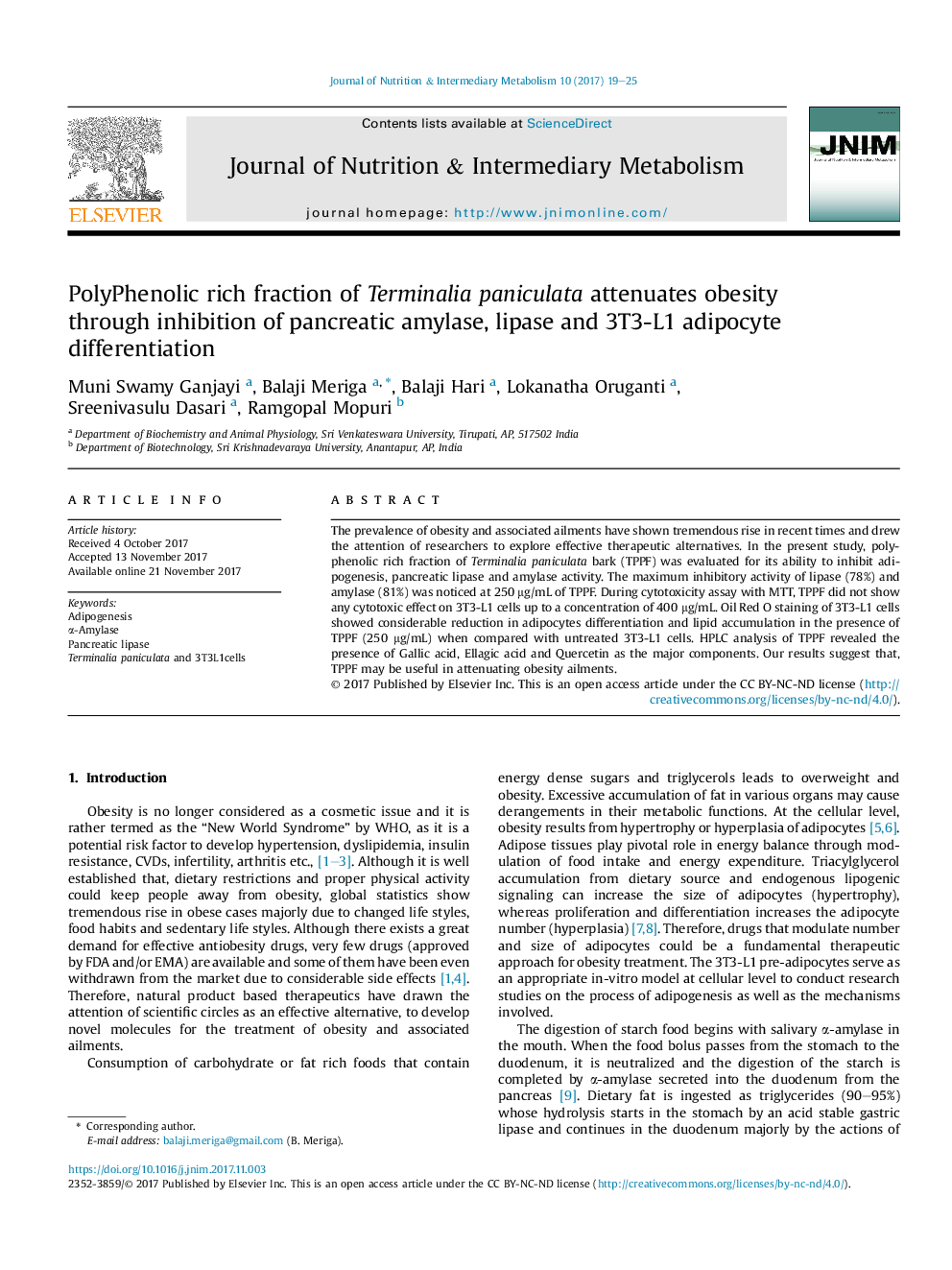| Article ID | Journal | Published Year | Pages | File Type |
|---|---|---|---|---|
| 8589163 | Journal of Nutrition & Intermediary Metabolism | 2017 | 7 Pages |
Abstract
The prevalence of obesity and associated ailments have shown tremendous rise in recent times and drew the attention of researchers to explore effective therapeutic alternatives. In the present study, polyphenolic rich fraction of Terminalia paniculata bark (TPPF) was evaluated for its ability to inhibit adipogenesis, pancreatic lipase and amylase activity. The maximum inhibitory activity of lipase (78%) and amylase (81%) was noticed at 250 μg/mL of TPPF. During cytotoxicity assay with MTT, TPPF did not show any cytotoxic effect on 3T3-L1 cells up to a concentration of 400 μg/mL. Oil Red O staining of 3T3-L1 cells showed considerable reduction in adipocytes differentiation and lipid accumulation in the presence of TPPF (250 μg/mL) when compared with untreated 3T3-L1 cells. HPLC analysis of TPPF revealed the presence of Gallic acid, Ellagic acid and Quercetin as the major components. Our results suggest that, TPPF may be useful in attenuating obesity ailments.
Related Topics
Life Sciences
Biochemistry, Genetics and Molecular Biology
Endocrinology
Authors
Muni Swamy Ganjayi, Balaji Meriga, Balaji Hari, Lokanatha Oruganti, Sreenivasulu Dasari, Ramgopal Mopuri,
